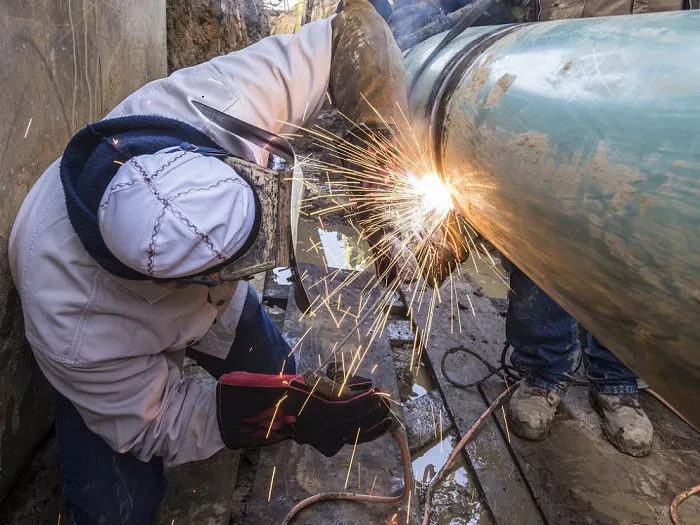stick welding aluminum
Stick Welding Aluminum A Comprehensive Guide
Stick welding, also known as Shielded Metal Arc Welding (SMAW), is a widely used method for metal fabrication. However, it is not commonly associated with aluminum welding due to the unique challenges posed by this lightweight metal. While stick welding is typically used for ferrous metals like steel, advancements in welding technology and techniques have made it possible to effectively weld aluminum using this method. This article delves into stick welding aluminum, exploring its applicability, techniques, equipment, advantages, and potential challenges.
Understanding Stick Welding
Stick welding employs a consumable electrode coated in flux to create an arc between the electrode and the workpiece. This arc generates sufficient heat to melt the electrode and the base metal, thereby forming a weld pool. The flux coating serves multiple purposes it protects the molten weld from atmospheric contaminants, stabilizes the arc, and helps the formation of a slag layer that aids in cleaning the weld area.
Challenges of Welding Aluminum
Aluminum presents unique challenges due to its physical and chemical properties
1. Oxidation Aluminum forms a thin yet tenacious layer of aluminum oxide (Al2O3) upon exposure to air, which melts at a much higher temperature than the aluminum itself. This makes it crucial to remove the oxide layer before welding, as it can lead to weak welds and porosity.
2. Thermal Conductivity Aluminum has a high thermal conductivity, which means it dissipates heat quickly. This property can make it difficult to establish and maintain the required welding temperature.
3. Heat Sensitivity Aluminum is sensitive to heat, and excessive temperatures can lead to distortion or melting of the base metal.
Equipment Needed for Stick Welding Aluminum
To successfully perform stick welding on aluminum, specific equipment and consumables are necessary
1. Electrodes For aluminum, specialized electrodes labeled as “E4043” or “E5356” are commonly used. These rods are designed to work well with aluminum and provide good arc stability while minimizing oxide contamination.
2. Welding Machine A DC (Direct Current) welding machine is recommended for aluminum stick welding. Ensure it has adjustable amperage settings, as the amperage required will depend on the thickness of the aluminum being welded.
3. Protective Gear Proper safety equipment, including a welding helmet, gloves, and protective clothing, is essential. The intense light and heat generated by the welding arc can cause burns and eye damage.
stick welding aluminum

4. Cleanliness Tools A wire brush or grinder may be necessary for cleaning the aluminum surface to eliminate the oxide layer before welding.
Techniques for Stick Welding Aluminum
Welding aluminum with the stick method involves specific techniques that may differ from other welding processes
1. Preparation Thoroughly clean the aluminum surfaces using a wire brush or chemical cleaner to remove any oils and the oxide layer.
2. Settings Set the welding machine to the appropriate amperage, typically between 100 to 200 amps, depending on the material thickness. It's important to adjust the settings to achieve a stable arc without excessive spatter.
3. Welding Angle Maintain a slight angle (about 15 to 20 degrees) to the workpiece to provide better visibility and control of the weld pool.
4. Movement Technique Use a consistent travel speed; too slow can lead to burn-through, while too fast can create a lack of fusion. A weaving motion may be beneficial to ensure proper penetration and even bead formation.
Advantages of Stick Welding Aluminum
Despite the challenges, there are several advantages to stick welding aluminum
1. Portability Stick welding equipment is generally more portable than other methods like TIG or MIG welding, making it ideal for fieldwork.
2. Cost-Effectiveness It requires minimal setup and is often less expensive in terms of equipment and consumables.
3. Versatility While traditionally not used for aluminum, with the right equipment and technique, stick welding can be applied to a variety of aluminum alloys.
Conclusion
Stick welding aluminum may not be the first method that comes to mind for many welders, but with the proper technique and equipment, it can be a viable option for certain applications. Understanding the specific challenges associated with aluminum and employing the right strategies can lead to successful welds. As technology continues to evolve, the scope of stick welding continues to broaden, making it an essential skill for welders in a variety of industries.
-
Premium Stainless TIG Electrodes High-Quality Welding SolutionsNewsMay.21,2025
-
E6013 3/32 Electrodes Wholesale Manufacturers - Durable & AffordableNewsMay.21,2025
-
E71TGS Welding Wire High-Strength Flux Core for Durable JointsNewsMay.20,2025
-
High-Strength 3/4 Welding Rod 7016 for Pipe Welding China SupplierNewsMay.20,2025
-
71T1 Flux Cored Wire High-Performance 1.2mm Welding SolutionsNewsMay.20,2025
-
3.25mm Welding Electrodes High-Performance, Durable Wholesale FactoryNewsMay.19,2025


